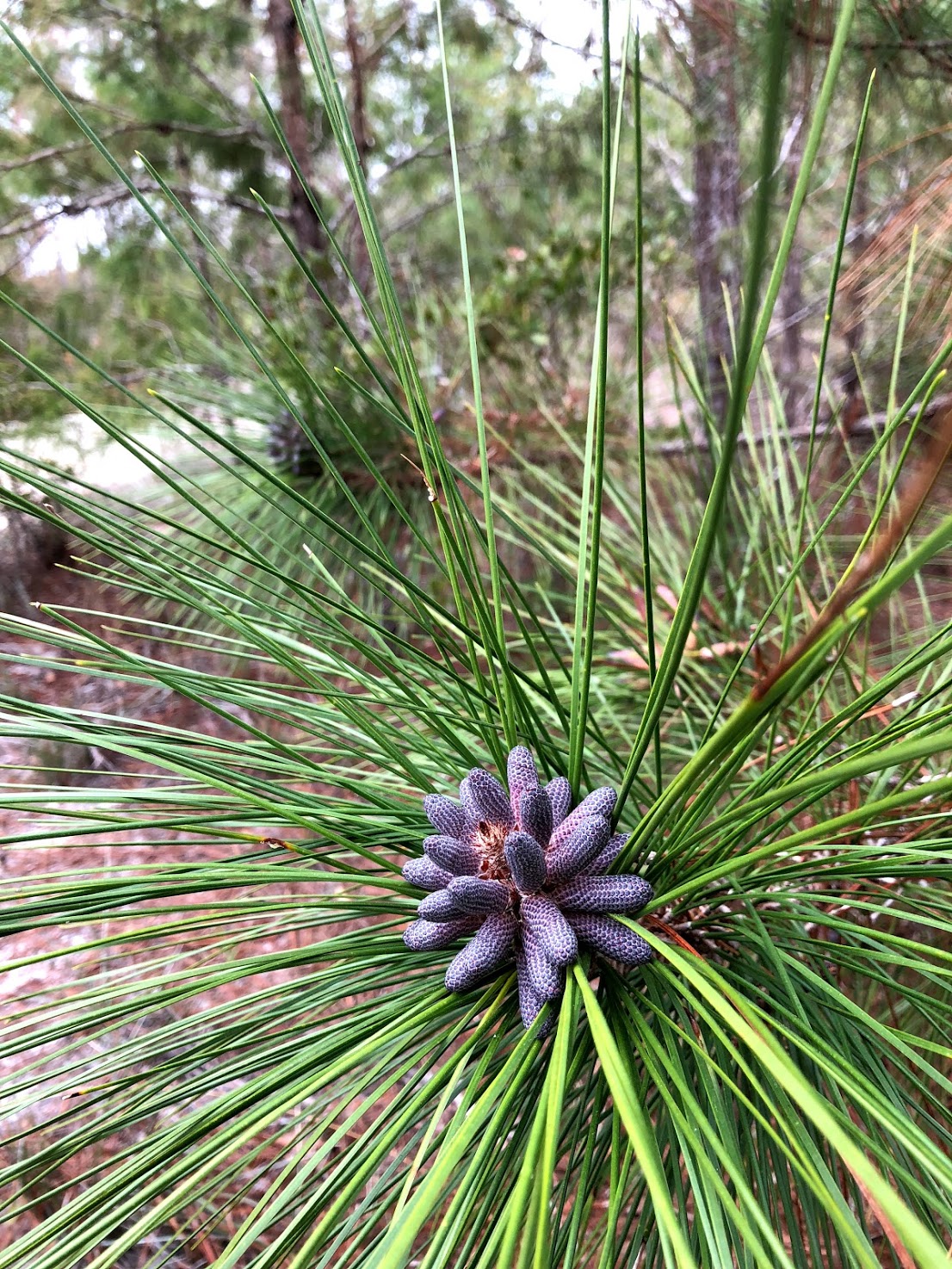Today the most prevalent species of pines are slash, loblolly and shortleaf. These species have come to dominate after humans decimated the original longleaf pine forest. The resinous timber was excellent for many uses including building construction and boat building.
The prehistoric longleaf pine forest covered most of the uplands from east Texas across the southeastern coastal plain up to southern Virginia and down peninsular Florida. We are down to approximately one percent of the untouched virgin longleaf ecosystem. With replanting on private and public lands we are at about 10 percent of the original acreage.
Pines are very desirable. They provide a light shade that lawns can thrive under and that native understory trees and shrubs prefer. They provide free mulch every autumn for use in landscape beds. They are long lived and make excellent carbon sinks.
They harbor a world of insects that become food for birds. Seed bearing cones are an important source of food for birds and mammals.
The pollen cones of a slash pine have an unusual purple color. (Photo: Lilly Anderson-Messec)
Pines are great structures for the nests of hawks, kites and bald eagles among many others. It’s a special treat to watch an eagle perched high in a pine at local lakes or the Gulf coast. Red-shouldered hawks have nested in a tall pine in our parking lot for the last few years.
Between lightening strikes, hurricane losses and irrational fear of pines the region is loosing its pine canopy. As owner of a retail garden center, I see that customers buy probably 500 hardwood trees for every one pine tree. The old pines are not being replaced.
On our Centerville Road property, we have lost some grand old pines mostly due to lightening strikes and resultant pine bark beetles. Each time we replace the missing pine with a young one – sometimes longleaf, sometimes spruce pine.
The Gopher tortoise is a currently threatened keystone species that relies on healthy pine forests for habitat. Photo by Lilly Anderson-Messec (Photo: Lilly Anderson-Messec)
To plant a pine, choose a sunny area. If you are at the Gulf coast, choose a slash pine which is the most salt tolerant species. Most typical soils around Tallahassee support loblolly, shortleaf, longleaf, slash and spruce pine.
I prefer to plant longleaf since it is less common and it is a strong, long lived tree reaching ages of 300 years. No, I won’t be around to see it into old age but I am planting for future generations.
For lightly shaded spots, plant a spruce pine because it is shade tolerant. It is a soft, graceful, short needled tree with small cones. If you have space, plant a small grove of pines. Their proximity to each other will help protect them during high winds.
The best planting time is November through February. Start with small trees from six inch bare root plants up to ones growing in three gallon pots.
Pines are such beautiful, stately trees. I love to listen to the wind rustling their needles. Let’s start planting more pines in our yards and parks. Wildlife and future generations of Tallahasseeans will reap the rewards.


